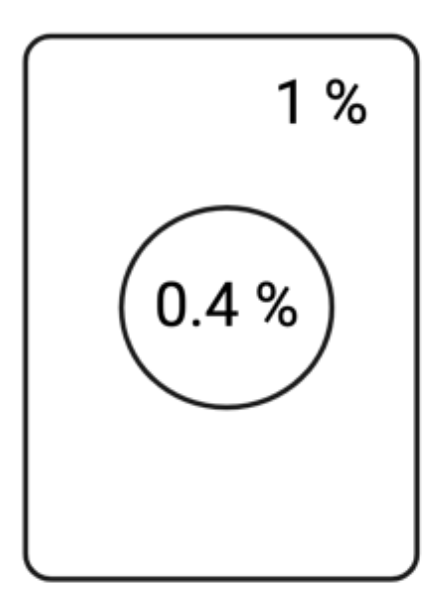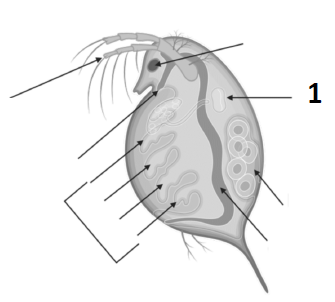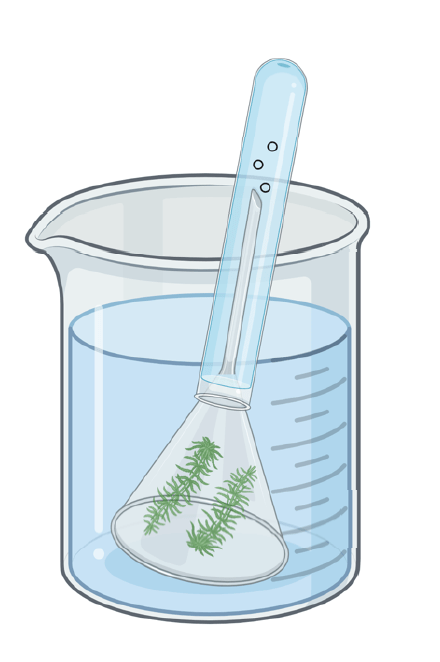The group in an experiment that receives the treatment is the 1.)______________ group and the group that does not receive the treatment is the 2.)______________ group.
1.) experimental
2.) control
What is the base unit for distance in the metric system?
meters
If a biological molecule mixes with water, is it considered hydrophilic or hydrophobic? Polar or non-polar?
Hydrophilic, polar.
When there is an equal concentration of solutes on the inside of a cell and the surrounding solution, what state is the cell in?
Isotonic
In comparison to the surrounding solution this cell is in a ____________ state.

Hypotonic
Type of variable that should be kept the exact same in both the experimental and the control group of an experiment.
constant variable.
How many milliliters are in this graduated cylinder?

8.7 ml
There were no bubbles or very little bubbles in the microwaved potato because...
the enzyme was denatured
What is the arrow labeled #1 pointing at?

Heart
The fact that the cell in the dialysis experiment increased in weight after being placed in RO H2O for 2 hours is evidence that 1.)______________ occurred. Thus, the membrane is permeable to 2.)______________.
1.) Osmosis
2.) Water
Name the 3 criteria for a valid scientific hypothesis.
Specific, measurable, falsifiable
What is the total magnification of a microscope under the 4x lens?
40
Total Magnification = 4 x 10 = 40
1.) _____________ reactions bring together monomers to form polymers. 2.) _____________ reactions break the bonds of polymers.
1.) dehydration
2.) hydrolysis
How do we know photosynthesis happened in the pictured experiment:

Oxygen was added to the tube! Air bubbles!
the iodine test for the liquid in the beaker was negative at the end of the experiment.
The factor you are interested in studying is the
1.) __________ variable and the thing you measure
between groups is the 2.)___________ variable.
1.) Independent variable
2.) Dependent variable
Name the part of the microscope that Dr. Rich is pointing at.
Ocular Lens
In the potato experiment the enzyme was 1._________ and the substrate it acted on was 2._________.
1. Catalase
2. Hydrogen Peroxide
In the balloon experiment, how do we know the yeast in the sucrose balloon was performing cellular respiration.
The balloon increased in circumference because it was filling with CO2 , we know CO2 is the output of cellular respiration.
Red blood cells in an isotonic state in a 0.9% NaCl solution. If we place them in a 10% solution, what do we expect to happen to the cell?
Cell will shrivel.
In lab 2 we wanted to know if temperature impacted the heart rate of daphnia magna. What was the independent and dependent variables in this study?
Independent variable: temperature
Dependent variable: heart rate
Convert 769 nanograms to grams and put the number in scientific notation.
7.69 x 10-7 grams
Name the 4 classes of biological macromolecules and their associated monomers.
1. Carbohydrates - monomer = monosaccharide
2. Proteins- monomer = amino acid
3. Nucleic acids - monomer = nucleotide
4. Lipids - monomer = NONE
Why did the phenyl red dye stay yellow in the tube that I put in the dark, meanwhile your dye returned to its original red state?
The Elodea in the tube in the dark was not able to perform the light reactions of photosynthesis.
Without the light reactions there are not energy carriers like ATP and NADPH to power the Calvin Cycle.
The Calvin Cycle is what uses the CO2 in the dye.
Removing the CO2 from the dye is what turns it red. Without light, the CO2 remained in the dye.
What happens to an animal cell when it is in a hypotonic state? Does the same thing happen to a plant cell? Why or why not?
When an animal cell is hypotonic it will burst. A plant cell will not burst as the central vacuole fills because of the cell wall.